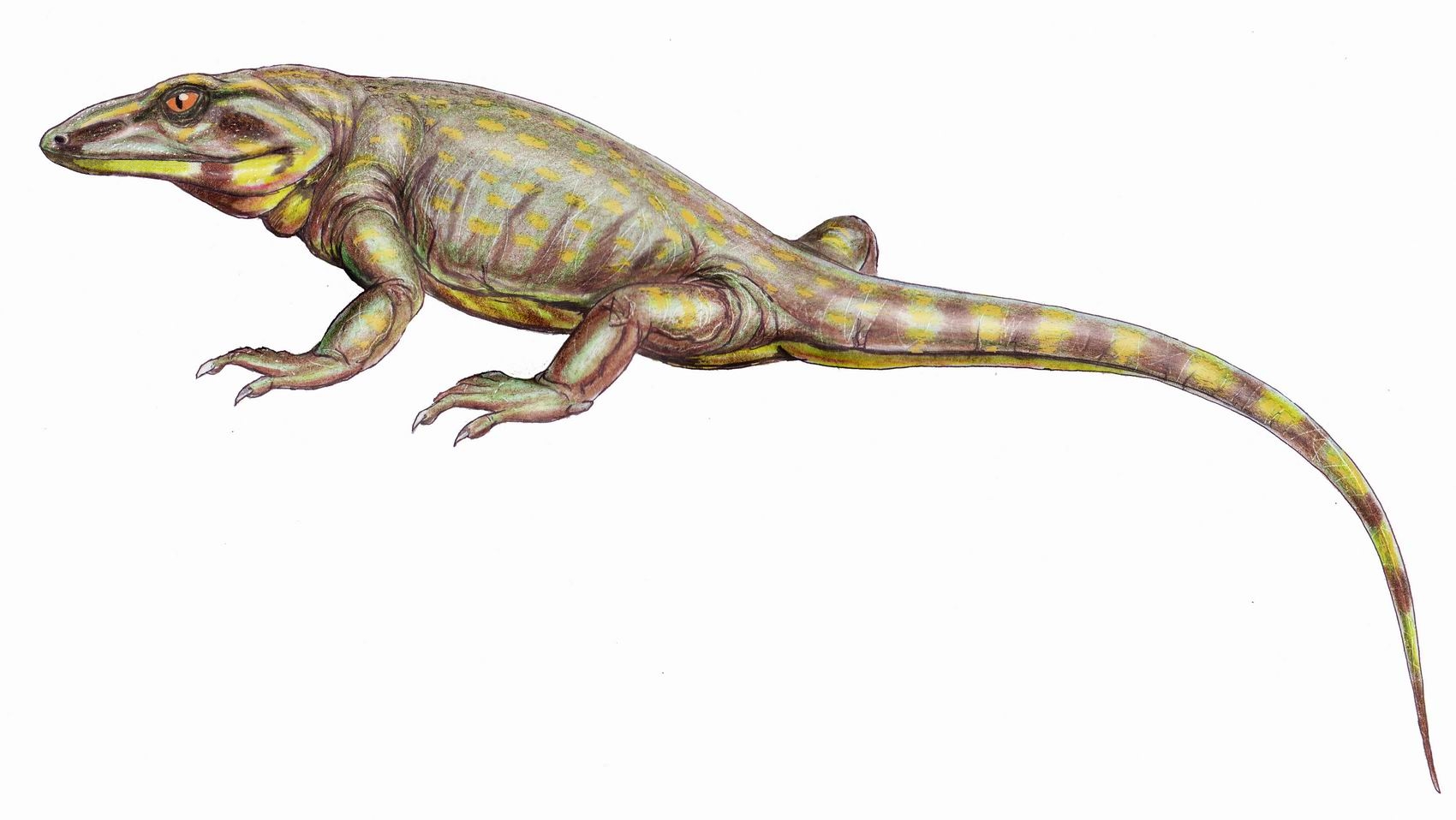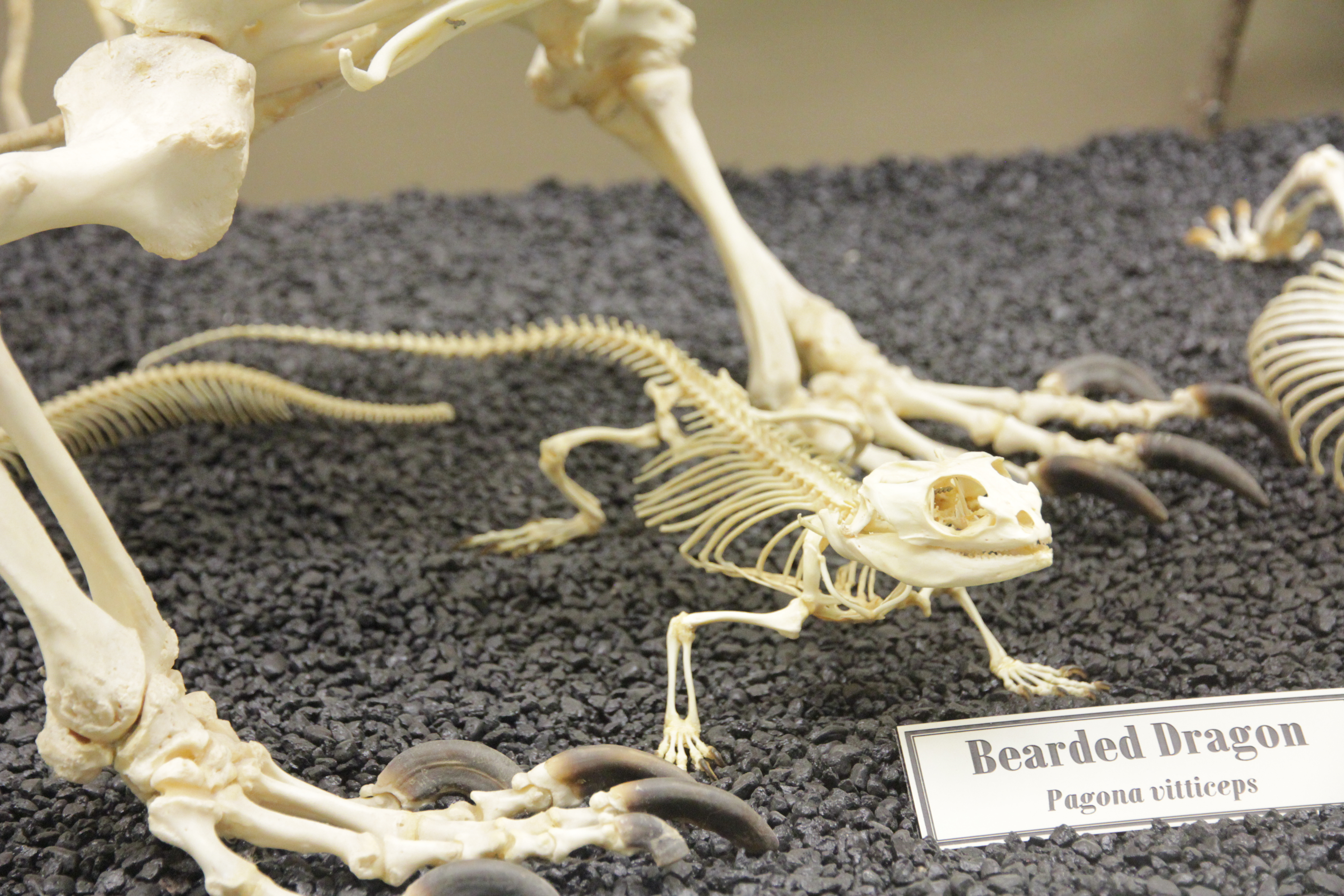|
Anolis Biporcatus
''Anolis biporcatus'', also known as the neotropical green anole or giant green anole, is a species of anole. It is found in forests, both disturbed and undisturbed, in Mexico, Central America, Colombia and Venezuela. More southern populations, in southwestern Colombia and western Ecuador, were recognized as a separate species, '' A. parvauritus'', in 2017. As suggested by its common names, the neotropical green or giant green anole is mostly green in color and relatively large, among the largest anoles in the mainland of the Americas. Males have a snout–vent length of about and the females, which grow slightly larger, about . In general, there is little sexual dimorphism in this species. The tail is roughly double the length of the snout-to-vent. See also *List of Anolis lizards The large lizard genus ''Anolis ''contains around 436 accepted anole () species, which have been considered in a number of subgroups, or clades such as ''carolinensis'' and ''isolepis''. ''Not ... [...More Info...] [...Related Items...] OR: [Wikipedia] [Google] [Baidu] |
Arend Friedrich August Wiegmann
Arend Friedrich August Wiegmann (2 June 1802 – 15 January 1841) was a German zoology, zoologist and Herpetology, herpetologist born in Braunschweig. He studied medicine and philology at the University of Leipzig, and afterwards was an assistant to Martin Lichtenstein (1780–1857) in Berlin. In 1828 he became a professor at Cologne, and two years later was an extraordinary professor at the Humboldt University in Berlin. Wiegmann specialized in the study of herpetology and mammalogy. In 1835, he founded, together with other scholars, the zoological periodical ''Archiv für Naturgeschichte'', also known as "Wiegmann's Archive". With Johann Friedrich Ruthe (1788–1859) he wrote an important textbook of zoology called ''Handbuch der Zoologie'', and in 1834 Wiegmann published ''Herpetologia Mexicana'', a monograph on the reptiles of Mexico. In 1841 he died of tuberculosis at the age of 38 in Berlin. His father Arend Friedrich Wiegmann (1771–1853) a German researcher in botany. ... [...More Info...] [...Related Items...] OR: [Wikipedia] [Google] [Baidu] |
Reptiles Of Colombia ...
Colombia is the sixth richest country in the world for reptiles, and third richest in the Western Hemisphere. Turtles The turtles (order: Chelonii or Testudines) number thirty-three species from nine families. Fifteen species are listed as vulnerable, endangered, or critically endangered. Three turtle species are listed as endemic. Crocodilia Squamata See also *Fauna of Colombia References External links * * * * {{South America topic, Reptiles of * Reptiles Colombia Colombia Colombia (, ; ), officially the Republic of Colombia, is a country in South America with insular regions in North America—near Nicaragua's Caribbean coast—as well as in the Pacific Ocean. The Colombian mainland is bordered by the Car ... [...More Info...] [...Related Items...] OR: [Wikipedia] [Google] [Baidu] |
Neotropical Realm Fauna
The Neotropical realm is one of the eight biogeographic realms constituting Earth's land surface. Physically, it includes the tropical terrestrial ecoregions of the Americas and the entire South American temperate zone. Definition In biogeography, the Neotropic or Neotropical realm is one of the eight terrestrial realms. This realm includes South America, Central America, the Caribbean islands, and southern North America. In Mexico, the Yucatán Peninsula and southern lowlands, and most of the east and west coastlines, including the southern tip of the Baja California Peninsula are Neotropical. In the United States southern Florida and coastal Central Florida are considered Neotropical. The realm also includes temperate southern South America. In contrast, the Neotropical Floristic Kingdom excludes southernmost South America, which instead is placed in the Antarctic kingdom. The Neotropic is delimited by similarities in fauna or flora. Its fauna and flora are distinct fr ... [...More Info...] [...Related Items...] OR: [Wikipedia] [Google] [Baidu] |
Reptiles Of Venezuela
Reptiles, as most commonly defined are the animals in the class Reptilia ( ), a paraphyletic grouping comprising all sauropsids except birds. Living reptiles comprise turtles, crocodilians, squamates (lizards and snakes) and rhynchocephalians (tuatara). As of March 2022, the Reptile Database includes about 11,700 species. In the traditional Linnaean classification system, birds are considered a separate class to reptiles. However, crocodilians are more closely related to birds than they are to other living reptiles, and so modern cladistic classification systems include birds within Reptilia, redefining the term as a clade. Other cladistic definitions abandon the term reptile altogether in favor of the clade Sauropsida, which refers to all amniotes more closely related to modern reptiles than to mammals. The study of the traditional reptile orders, historically combined with that of modern amphibians, is called herpetology. The earliest known proto-reptiles originated around ... [...More Info...] [...Related Items...] OR: [Wikipedia] [Google] [Baidu] |
Reptiles Of Panama
Reptiles, as most commonly defined are the animals in the class Reptilia ( ), a paraphyletic grouping comprising all sauropsids except birds. Living reptiles comprise turtles, crocodilians, squamates (lizards and snakes) and rhynchocephalians (tuatara). As of March 2022, the Reptile Database includes about 11,700 species. In the traditional Linnaean classification system, birds are considered a separate class to reptiles. However, crocodilians are more closely related to birds than they are to other living reptiles, and so modern cladistic classification systems include birds within Reptilia, redefining the term as a clade. Other cladistic definitions abandon the term reptile altogether in favor of the clade Sauropsida, which refers to all amniotes more closely related to modern reptiles than to mammals. The study of the traditional reptile orders, historically combined with that of modern amphibians, is called herpetology. The earliest known proto-reptiles originated around 31 ... [...More Info...] [...Related Items...] OR: [Wikipedia] [Google] [Baidu] |
Reptiles Of Nicaragua
Reptiles, as most commonly defined are the animals in the class Reptilia ( ), a paraphyletic grouping comprising all sauropsids except birds. Living reptiles comprise turtles, crocodilians, squamates (lizards and snakes) and rhynchocephalians (tuatara). As of March 2022, the Reptile Database includes about 11,700 species. In the traditional Linnaean classification system, birds are considered a separate class to reptiles. However, crocodilians are more closely related to birds than they are to other living reptiles, and so modern cladistic classification systems include birds within Reptilia, redefining the term as a clade. Other cladistic definitions abandon the term reptile altogether in favor of the clade Sauropsida, which refers to all amniotes more closely related to modern reptiles than to mammals. The study of the traditional reptile orders, historically combined with that of modern amphibians, is called herpetology. The earliest known proto-reptiles originated around 31 ... [...More Info...] [...Related Items...] OR: [Wikipedia] [Google] [Baidu] |
Reptiles Of Mexico
Reptiles, as most commonly defined are the animals in the class Reptilia ( ), a paraphyletic grouping comprising all sauropsids except birds. Living reptiles comprise turtles, crocodilians, squamates (lizards and snakes) and rhynchocephalians (tuatara). As of March 2022, the Reptile Database includes about 11,700 species. In the traditional Linnaean classification system, birds are considered a separate class to reptiles. However, crocodilians are more closely related to birds than they are to other living reptiles, and so modern cladistic classification systems include birds within Reptilia, redefining the term as a clade. Other cladistic definitions abandon the term reptile altogether in favor of the clade Sauropsida, which refers to all amniotes more closely related to modern reptiles than to mammals. The study of the traditional reptile orders, historically combined with that of modern amphibians, is called herpetology. The earliest known proto-reptiles originated around 31 ... [...More Info...] [...Related Items...] OR: [Wikipedia] [Google] [Baidu] |
Reptiles Of Honduras
Reptiles, as most commonly defined are the animals in the class Reptilia ( ), a paraphyletic grouping comprising all sauropsids except birds. Living reptiles comprise turtles, crocodilians, squamates (lizards and snakes) and rhynchocephalians (tuatara). As of March 2022, the Reptile Database includes about 11,700 species. In the traditional Linnaean classification system, birds are considered a separate class to reptiles. However, crocodilians are more closely related to birds than they are to other living reptiles, and so modern cladistic classification systems include birds within Reptilia, redefining the term as a clade. Other cladistic definitions abandon the term reptile altogether in favor of the clade Sauropsida, which refers to all amniotes more closely related to modern reptiles than to mammals. The study of the traditional reptile orders, historically combined with that of modern amphibians, is called herpetology. The earliest known proto-reptiles originated around 31 ... [...More Info...] [...Related Items...] OR: [Wikipedia] [Google] [Baidu] |
Reptiles Of Guatemala
This is a list reptiles in Guatemala, including snakes, lizards, crocodilians, and turtles. Guatemala has a large variety of habitats, from tropical rain forests, dry thorn scrubs, cloud forests, coastal marshes, pine forests, mountains and lowlands. This vast contrast in biomes makes Guatemala home to a large variety of herpetofauna. These include approximately 240 species of reptiles, subdivided in 3 orders and 29 families. __NOTOC__ Turtles (Testudines) Cheloniidae Order: Testudines. Family: Cheloniidae Sea turtles (Cheloniidae) are a family of large tortoises found in all tropical seas and some subtropical and temperate seas. Sea turtles evolved from land turtles about 120 million years ago and are well adapted to life in the sea. Sea turtles eat mostly jellyfish, crustaceans and squid. There are 6 species worldwide, of which at least 5 are currently endangered. * Loggerhead sea turtle''Caretta caretta'' (Linnaeus, 1758) N* Pacific green turtle''Chelonia agassizii'' ... [...More Info...] [...Related Items...] OR: [Wikipedia] [Google] [Baidu] |
Reptiles Of Ecuador
Reptiles, as most commonly defined are the animals in the class Reptilia ( ), a paraphyletic grouping comprising all sauropsids except birds. Living reptiles comprise turtles, crocodilians, squamates (lizards and snakes) and rhynchocephalians (tuatara). As of March 2022, the Reptile Database includes about 11,700 species. In the traditional Linnaean classification system, birds are considered a separate class to reptiles. However, crocodilians are more closely related to birds than they are to other living reptiles, and so modern cladistic classification systems include birds within Reptilia, redefining the term as a clade. Other cladistic definitions abandon the term reptile altogether in favor of the clade Sauropsida, which refers to all amniotes more closely related to modern reptiles than to mammals. The study of the traditional reptile orders, historically combined with that of modern amphibians, is called herpetology. The earliest known proto-reptiles originated around 31 ... [...More Info...] [...Related Items...] OR: [Wikipedia] [Google] [Baidu] |
Reptiles Of Costa Rica
Reptiles, as most commonly defined are the animals in the class Reptilia ( ), a paraphyletic grouping comprising all sauropsids except birds. Living reptiles comprise turtles, crocodilians, squamates (lizards and snakes) and rhynchocephalians (tuatara). As of March 2022, the Reptile Database includes about 11,700 species. In the traditional Linnaean classification system, birds are considered a separate class to reptiles. However, crocodilians are more closely related to birds than they are to other living reptiles, and so modern cladistic classification systems include birds within Reptilia, redefining the term as a clade. Other cladistic definitions abandon the term reptile altogether in favor of the clade Sauropsida, which refers to all amniotes more closely related to modern reptiles than to mammals. The study of the traditional reptile orders, historically combined with that of modern amphibians, is called herpetology. The earliest known proto-reptiles originated around ... [...More Info...] [...Related Items...] OR: [Wikipedia] [Google] [Baidu] |
Reptiles Of Belize
Reptiles, as most commonly defined are the animals in the class Reptilia ( ), a paraphyletic grouping comprising all sauropsids except birds. Living reptiles comprise turtles, crocodilians, squamates ( lizards and snakes) and rhynchocephalians (tuatara). As of March 2022, the Reptile Database includes about 11,700 species. In the traditional Linnaean classification system, birds are considered a separate class to reptiles. However, crocodilians are more closely related to birds than they are to other living reptiles, and so modern cladistic classification systems include birds within Reptilia, redefining the term as a clade. Other cladistic definitions abandon the term reptile altogether in favor of the clade Sauropsida, which refers to all amniotes more closely related to modern reptiles than to mammals. The study of the traditional reptile orders, historically combined with that of modern amphibians, is called herpetology. The earliest known proto-reptiles originated a ... [...More Info...] [...Related Items...] OR: [Wikipedia] [Google] [Baidu] |








.png)